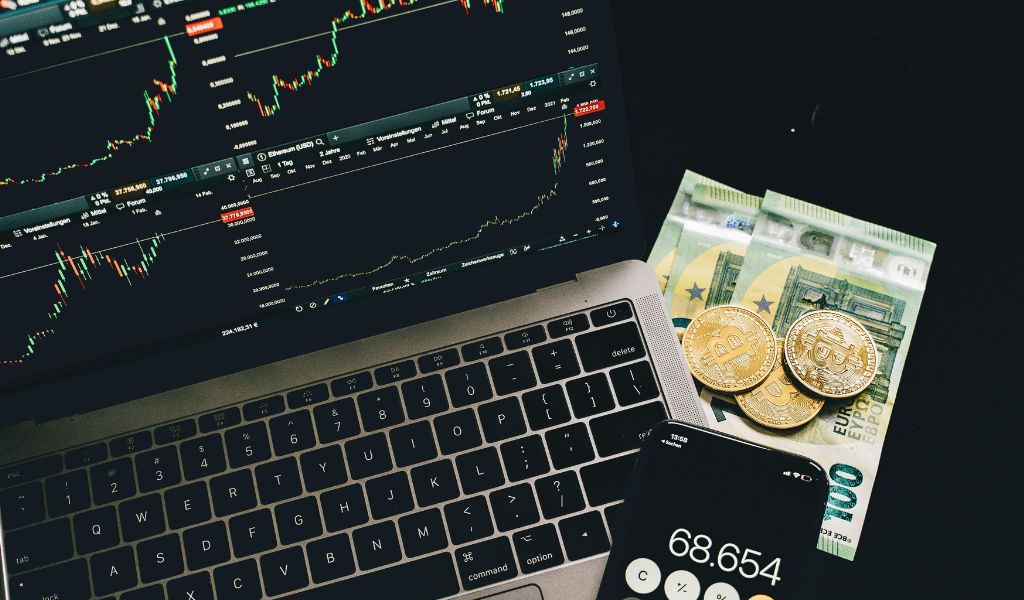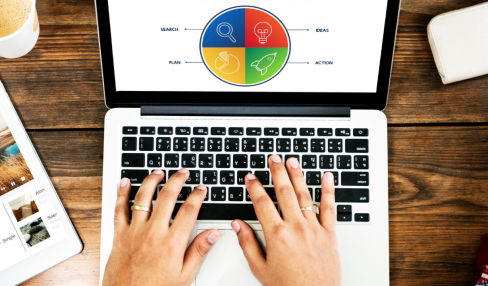What Is A Trading Strategy? 5 Strategies Used By Trading Firms In 2025
5 Mins Read
Published on: 13 August 2025
Last Updated on: 14 August 2025

- What Is A Trading Strategy?
- 5 Strategies Used By Trading Firms In 2025:
- 1. Artificial Intelligence Use In Predictive Analysis:
- 2. High-Frequency Trading And Infrastructure Optimization:
- 3. Quantitative Risk Management:
- 4. Broad-Based Diversification Across Assets:
- 5. Proprietary Tool And Real-Time Data Analytics Integration:
- Know What Is A Trading Strategy And Trade On The Go!
Trading firms have always developed with the dynamic world of finance as they have managed to keep up with the times. These firms experienced a year of change in 2025, with the changes that have gripped the world in technology and global economies. The environment is more competitive than ever before, and there has been a large reduction in the margin of error.
But what is a trading strategy exactly? Is there a formula, or is it mostly luck? TBH, your success in the trading world depends on how well you execute the plan – execution is everything.
Today, I am going to lay out the five most common trading strategies that are relevant to beginners in 2025. Stay tuned.
What Is A Trading Strategy?
Trading strategies are used for selling and buying securities – it is a sort of systematic methodology. Moreover, these strategies depend on predefined criteria and rules, both of which are used for making any trading decision.
These strategies can be complex or simple, and include considerations like market cap, investment style, technical indicators, portfolio diversification, fundamental analysis, time horizon, leverage, risk tolerance, industry sector, and more.
Moreover, these strategies primarily depend on using objective information and analytical data. Also, a good trading strategy will need periodic re-evaluation and changes as per market conditions and business goals.
5 Strategies Used By Trading Firms In 2025:
There are different kinds of trading strategies. However, these strategies depend largely on fundamentals and technicals. Moreover, the common thread here is that both fundamentals and technicals depend on quantifiable data that can always be backtested (and even stored) for accuracy.
On that note, let’s check out the most common trading strategies in 2025. Please note that I’ve only done five fundamental and technical strategies that are most relevant for beginners.
1. Artificial Intelligence Use In Predictive Analysis:
Artificial intelligence in predictive analysis has been one of the most influential moves accepted by trading companies in 2025. AI has evolved from a tool of support to a central driver of decision-making.
Complex algorithms that can analyze large sets of data in real-time have been integrated in trading firms to predict market trends with unseen precision. The strategy would help companies to discover patterns that the human eye could hardly observe and hence help them to predict changes even before they occur.
Artificial intelligence (AI) has achieved the ability to analyze not only conventional measures of financial markets, but also social moods, news, macroeconomic, and geopolitical indicators.
2. High-Frequency Trading And Infrastructure Optimization:
High-frequency trading (HFT) and infrastructure optimization are other major trends that are gaining popularity in 2025. Trading companies are on the edge of speed to conduct trades in fractions of a second.
This strategy is highly dependent on the best current infrastructure, such as co-located computers, low-latency networks, and the best computational systems.
Anything imperceptible to an ordinary human being, such as a 1 microsecond delay in this arrangement, can lead to lost opportunities or financial loss; thus, technological optimization is not an optional requirement here. It is not only the focus on trading strategies but also on the architecture underpinning the strategies.
3. Quantitative Risk Management:
Prudent risk-taking remains one of the foundations of profitable trading, but in 2025, the usage of quantitative models is established as the tool of choice in terms of exposure management and stability.
Even these types of models employ the use of mathematical concepts in the evaluation of the probability of negative events, as well as gauging the effect that several situations could have in the market. Currently, trading firms use multi-factor models are being used, and they take into consideration the concept of volatility, liquidity, correlations, and tail risks.
They constantly update these models and calibrate them with machine learning so that they are applicable in fast-changing markets. Quantitative tools can help the firm have confidence in the trading decisions it makes, if the trading is respected in terms of risk tolerance levels and portfolio approaches.
4. Broad-Based Diversification Across Assets:
In the year 2025, trading companies will not focused on a single capital market or asset type. In its place, it has adopted an overall strategy of diversification across equities, fixed income, commodities, currencies, digital assets, and derivatives.
The logic of using the method is to decrease the fluctuations of the portfolio and improve its performance by alternating a high-risk trade with more secure investments. In the current globalized economic environment, businesses have realized that there are opportunities in the global markets and thus a diversified portfolio is necessary to realize them.
They exploit cross-asset trading platforms, which are healthy to facilitate smooth execution and tracking of positions across diverse market venues. Diversification also gives the firms a chance to exploit pricing opportunities due to an arbitrage that occurs between asset classes.
5. Proprietary Tool And Real-Time Data Analytics Integration:
By 2025, trading firms will make a massive investment in space vying to deeply develop and integrate proprietary tools that are unique to driving the energy of real-time data analytics. The financial markets are at an exorbitant pace, and access to time-sensitive data has become more of a necessity than a luxury.
You can easily collaborate with a fast payout prop firm to guarantee that the traders, operating under their structural banners, can enjoy the capability of having instant access to money as well as smooth compensation structures, benefiting the performance and motivational levels.
Real-time analytics has transformed how people look at trading strategies. Then tested and implemented with precision and flexibility, the most relevant building blocks in the success of a trade.
Know What Is A Trading Strategy And Trade On The Go!
The business sphere of 2025 resembles the age of the digital world: a high-speed, data-powered, and hyper-competitive realm. Companies that depend on feelings and traditional wisdom have been turned into technological giants. Moreover, they employ innovation on all levels to gain an advantage.
This is as sophisticated as the predictive analytics strategies that include the application of AI, to the microsecond gains of high-frequency trading. The use of quantitative risk models, cross-asset diversification, and the real-time data capabilities address a larger trend of adopting scientific rigor and personalization in trade activities.



















Comments Are Closed For This Article